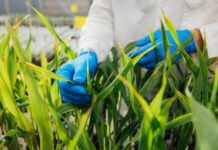Although the poultry industry has developed steadily over the years in Africa, the continent continues to encounter a severe chicken crisis.
An oversupply of poultry imports and uneven distribution of products throughout African countries makes it hard to meet the demands of the growing population — many of which live well below the poverty line.
Low-cost feed, such as corn and other grains, is essential for poultry farming, which Africa has been unable to produce enough of. Is all hope lost?
Developing solutions for better poultry production requires understanding what’s driving the crisis.
History of Agriculture in Africa
According to the United Nations Conference on Trade and Development (UNCTAD), Africa imports 85% of its food from outside the continent. This equates to a food import bill of $35 billion, expected to increase to $100 billion by 2025.
Africa’s reliance on food imports worldwide could lead to serious implications for food security, making it critical for the continent to find a way to improve its poultry production. However, Africa must continue to increase its grain and feed production to do this.
Africa has a long history of agriculture and cultivating food typically met with several challenges that inhibit development. Recently, many factors attributed to low agricultural production in African countries include climate change, soil quality, diseases and slavery. Research has also found that Africa hasn’t fully recovered from the arrival of European merchants and resource and wealth extraction.
As African populations continue to grow, the continent’s ability to produce grain for humans and chickens has added to Africa’s import expenses.
An Oversupply of Chickens
The U.S. provides tariff-free shares of agricultural products, including chickens, through the African Growth and Opportunity Act. This is a trade agreement between South Africa and the United States.
An increased import of chickens in South Africa has led to oversupply and decreasing costs to consumers. It also ruins the incentive to boost local production.
Currently, South Africa’s population is over 60 million, and its growth rate is at 1.82% annually. This raises the question of whether or not poultry imports are fiscally sustainable in the long run.
In 2018, South African consumers spent about $15 billion on meat products, 60% of which came from poultry consumption. Imports have provided an excess supply of chickens to feed the population, but South Africa can produce its own chickens at a much cheaper rate.
Of course, not every country in Africa is dealing with oversupply.
A Higher Demand for Chickens
Unlike South Africa, other African countries have a much higher demand for chickens. As populations and urbanization have increased, diets have also changed. Over the years, meat consumption has moved away from beef and pork, with poultry accounting for 44% of output.
The poultry supply has not been able to keep up with the demand in many parts of Africa, increasing prices for consumers. Those costs will continue to rise if countries fail to find a way to meet poultry demands.
Many African populations live in extreme poverty, with 40% living below $2 a day in 2018. In 2021, chicken prices increased by 14.6%, which is concerning for poorer households who rely on poultry as a source of protein.
Challenges of Poultry Production
Poultry production faces many challenges in Africa. For example, while the local production of poultry has seen a slight surge in East African countries like Kenya, Rwanda, Tanzania and Uganda, chicken farming has been hindered throughout the rest of the continent by the following factors:
- Limited availability of high-quality, protein-rich feed for chicks who require their diet to consist of 18-20% protein
- Rising prices of farm input for essential raw materials
- Increasing poultry diseases like Newcastle disease, Marek’s disease and infectious bursal disease; and the inability to control the spread due to higher vaccine costs
- Limited knowledge about poultry markets
- Lack of policies around the chicken trade
- Limited investment in agricultural and poultry farming research
- Lack of farming incentives
Likewise, the COVID-19 pandemic has emphasized consumer demand for safe, high-quality poultry that will further affect production practices. Today, Africa struggles to feed its people, making it essential to prioritize feeding its chickens and boosting local production.
As such, farmers, veterinarians, governments and other stakeholders need to work together to develop viable solutions to the poultry crisis.
Opportunities for Expansion
There is an opportunity to expand poultry production and enhance maize agriculture in Africa with the right business strategy and increased funding. Improving feed conversion and making materials, equipment and vaccines more accessible can help also boost breeding.
However, local farmers and African-based agricultural agencies must remain committed to increasing local supply and decreasing chicken imports.
Bio: Jane is an agriculture and environmental journalist and the founder and editor-in-chief of Environment.co, where she covers sustainability and eco-friendly living.









